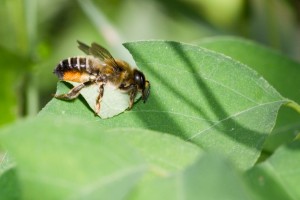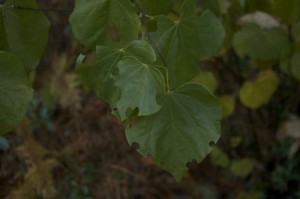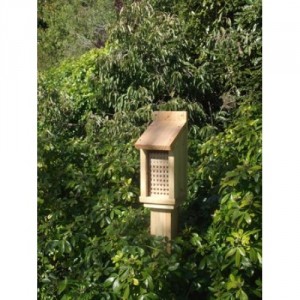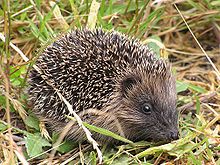Have you ever noticed holes in your plant leaves and assumed they were the work of a hungry caterpillar? Perfectly rounded or oval holes on the edges of a leaf are usually the sign of a nearby nesting leafcutter bee.

Photo by Bernhard Plank
Leafcutter bees are one of a huge diversity of native bees that you can easily attract and introduce to your wildlife garden.
These neatly outlined holes on the edge of these leaves are the work of a leafcutter bees. Nectar plants will attract these bees, but to survive from year to year, leafcutter bees need overwintering nest sites, such as those available from www.creativewoodcraft.co.nz.

Unlike butterfly and moth caterpillars, or herbivorous beetles , leafcutter bees don’t eat leaves, but cut off small pieces of leaf to use in building their nests. Leafcutter bees are among a large number of bee species known as “solitary” bees because they don’t live in social hives, like honey and bumble bees. This is important, because bees without a nest to protect are very unlikely to sting you.
Providing habitat
Female leafcutter bees lay their eggs inside hollow plant stems or in existing tunnels in trees and solitary bee nesting houses and use leaf cuttings from nearby plants to build sturdy walls around the eggs to keep them safe and dry in their nest right through the winter. Both males and females visit flowers for nectar to fuel their flight, but females also collect pollen and nectar, which they use to stock their nests with a food supply for the young bees after they hatch. Hatchlings feed on these “pollen balls” til they emerge from the nest the following year.
Providing suitable nesting sites
If your property has brushy areas with lots of old plants, or a few trees with natural cavities, you could well already have resident leafcutter bee populations. But to really increase population survival from year to year (or if you live in more of an urban area where a more manicured look is sometimes required), you can provide nesting sites by hanging a “solitary bee house” which many native bees and other beneficial insects will readily use.

Available from www.creativewoodcraft.co.nz
Beneficial plants.
Leafcutter bees seem to have local preferences for the plants they like to use for nesting. If you see leafcutter holes on your plant leaves, please share with us the species! It’s always interesting to hear about regional preferences, and discover the plants in our backyards that provide the widest range of resources for wildlife…
Leafcutting Bee Cells, to get you started!
Leafcutting Bee Cells containing dormant Leafcutting bees are available at www.creativewoodcraft.co.nz and are shipped between Late April 2013 through to December 14th 2013 while stocks last.
They are offered for sale in sets of x 25
We suggest purchasing two sets to guarantee that you get a good colony going.
Creative Woodcraft Solitary Bee Houses are purposely designed to accept Leafcutting Bee Cells.






